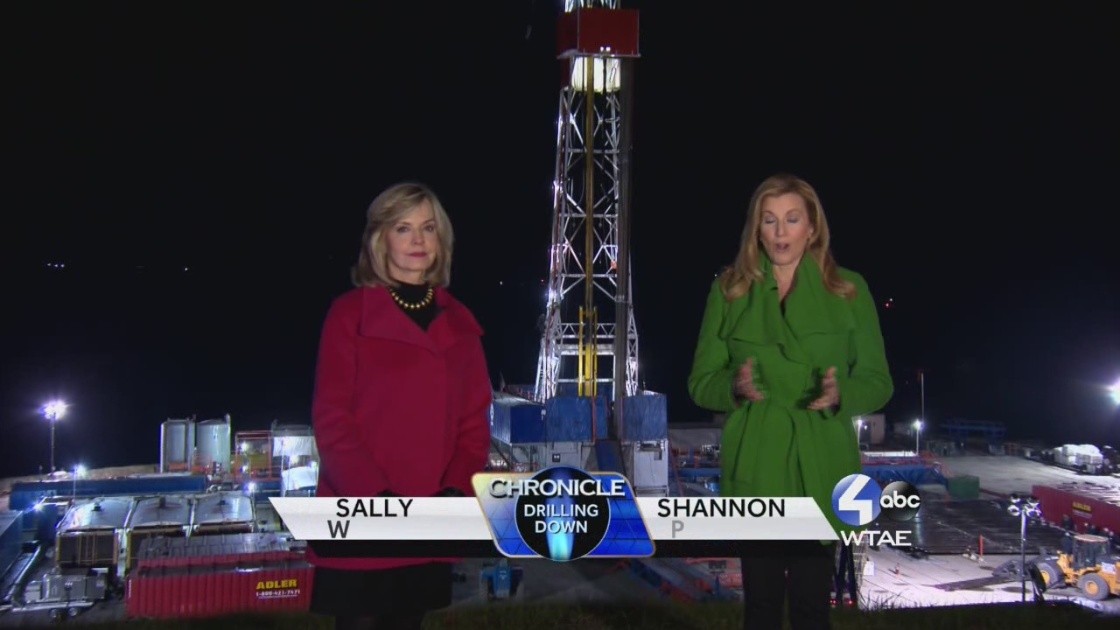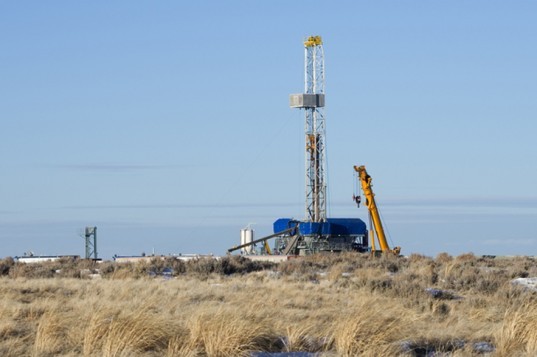Fracking 101 How could fracking affect you Iowa Energy Center
Post on: 16 Март, 2015 No Comment

Basics of fracking:
Fracking, also known as hydraulic fracturing or fracture stimulation, is a process used in deep well drilling to increase the productivity of natural gas and oil wells. Once a well is drilled, millions of gallons of water, sand, and proprietary chemicals are injected, under high pressure, which creates fractures in the reservoir rocks. The fractures propagate and create a network of open fissures allowing the natural gas or oil to move freely out of the well.
Below is a video from SMT Learning describing the process of hydraulic fracturing:
Current layers of interest:
While many reservoir rocks are typically porous sandstone, limestone, or dolomite rocks, there are also “unconventional reservoirs” such as shale rocks or coal beds. Currently, an area of interest is shale rock in the Appalachian region, where the Marcellus and Utica shale layers may serve as large-scale natural gas producers.
1. Marcellus Shale
Marcellus Shale is low-density, carbon-rich shale that is found beneath much of Ohio, West Virginia, Pennsylvania, and New York. Marcellus Shale is also under small areas of Maryland, Kentucky, Tennessee, and Virginia. It is about one mile or more below the surface, which can make drilling wells expensive and difficult.
Shale rock typically has many pore spaces, vertical fractures, mineral grains, and organic material within the rock. The combination of these “imperfections” have allowed for natural gas from the breakdown of organic material to build up over time.
Natural gas wells have been completed in the Marcellus for about 13 years, but the early wells had unimpressive natural gas yields that have slowly decreased over time. While many of them continue to produce some amounts of gas, newer wells use horizontal drilling and hydraulic fracturing technologies and have much higher initial production than the old wells. From early reported results on the new wells, some are producing over one million cubic feet of natural gas per day, but it is expected, as with most gas wells, that production rates will decline over time.
It is expected that the Marcellus Shale will provide a huge volume of recoverable gas in the eastern U.S. and have a large economic significance. According to an article by geology.com. if early estimates hold true, the Marcellus Shale could contain more than 500 trillion cubic feet of natural gas, and if horizontal drilling and hydraulic fracturing methods are used, 10 percent or 50 trillion cubic feet of natural gas could be recovered. This amount is enough to supply the U.S. with natural gas for two years, and has a potential value of about one trillion dollars. As with most gas wells, production rates decline over time, but long-term data with horizontal and hydraulic fracking technologies is not currently available.
The eastern side of the Marcellus Shale is advantageously placed near high population marketplaces, such as, New Jersey, New York, and New England. Gas produced from the western portion of Marcellus might be transported to the central part of the U.S. which will have a positive impact on the stability of natural gas supply.
2. Utica Shale
While Marcellus Shale is the current drilling target in the Appalachian region, Utica Shale is another rock formation layer with potential, but it is located thousands of feet below Marcellus Shale. The Utica Shale formation is thicker than the Marcellus and if the Marcellus Shale wells start to decline, existing wells might be extended down to Utica to continue natural gas production using the infrastructure already in place.
Fracking viewpoints:
While fracking techniques have been used for decades, new hydraulic fracturing technologies offer both greater risks and rewards. Because of this, both vocal critics and advocates of the process have emerged. With the recently-discovered production potential of Marcellus and Utica Shale fields, both groups, and even the general public, will feel the impacts of fracking.
Pro-fracking groups:
Proponents of fracking generally look to the economic benefits from the vast amounts of formerly inaccessible resources.
According to a report by the International Energy Agency. the remaining technically recoverable resources are estimated at 208 trillion cubic meters of shale gas, 76 trillion cubic meters of tight gas, and 47 trillion cubic meters of coal-bed methane.
The National Petroleum Council stated in a report fracking would account for nearly 70 percent of natural gas development in the future. The latest technologies, hydraulic fracturing and horizontal drilling, make it commercially viable to recover shale gas and oil. Without fracking technologies, the U.S. would reportedly lose 45 percent of domestic natural gas production and 17 percent of oil production within five years.
An IHS Global Insight study reported the development of shale resources supported 600,000 jobs in 2010. The report also estimates that lowered gas prices will add an additional $962 of disposable household income annually between 2012-2013 and the amount could increase to $2,000 by 2035.

Affordable, domestic natural gas is critical to the chemical, manufacturing, and steel industries. The American Chemistry Council reported during West Virginias Energy Summit in December 2011. that a 25 percent increase in the supply of ethane (a liquid derived from shale gas) could add over 400,000 jobs across the economy, provide over $4.4 billion annually in federal, state, and local tax revenue and spur $16.2 billion in capital investment by the chemical industry. The low price of ethane could also give U.S. manufacturers an advantage over many global competitors.
Anti-fracking groups:
Fracking has raised environmental concerns related to ground water contamination, risks to air quality, migration of gasses and hydraulic fracturing chemicals to the surface, mishandling of waste, and health effects. Fracking also is a concern for its contribution to raised atmospheric greenhouse gasses.
During the fracking process, companies buy drilling rights from landowners, build new roads and raise patches of land often in formerly untouched environments. The process uses millions of gallons of water, tons of chemicals, and machinery with diesel emissions.
Fracking companies currently do not disclose the chemicals used, but scientists have identified volatile organic compounds (VOCs) such as benzene, toluene, ethylbenzene, and xylene used in fracking.
For these reasons, hydraulic fracturing has come under international scrutiny and some countries have suspended or banned the practice.
Anti-fracking groups such as No-Fracking and Marcellus Shale Protest said they believe that fracking will follow the same “boom then bust” pattern of coal mining and heavy industry. The industry compromises the regions quality of life and economic potential for future generations, and those who profit are not around to clean up the aftermath.
How will fracking in the Appalachian area impact Iowa?
If the Marcellus Shale meets the expected natural gas yields, the nation will be impacted by lower natural gas costs. Iowans will not see direct, physical impacts of fracking because the two shale layers are not beneath Iowa, and as of now there are no fracking operations in Iowa.
For more technical information on fracking, visit geology.com .














